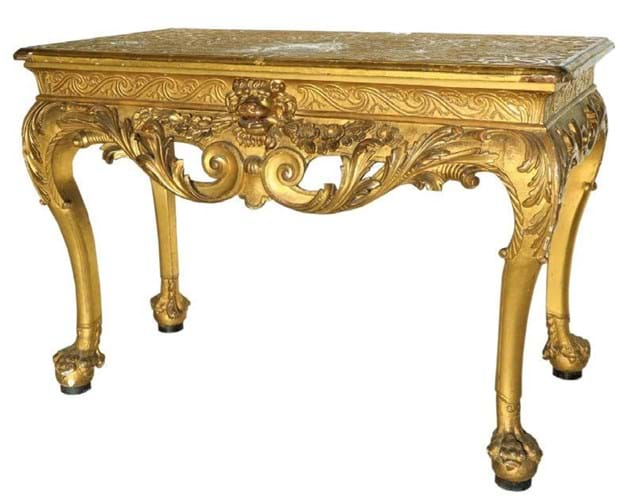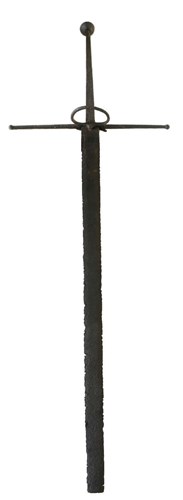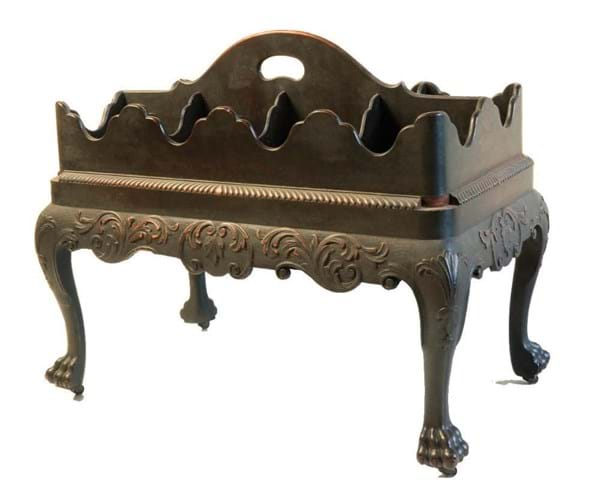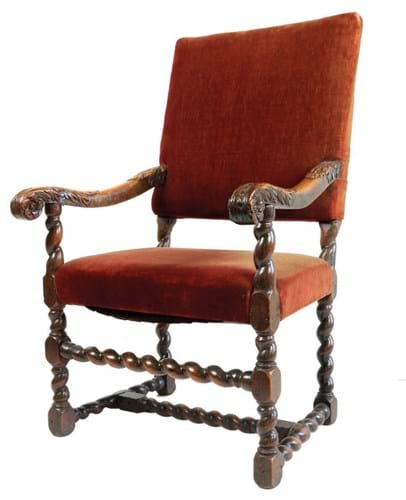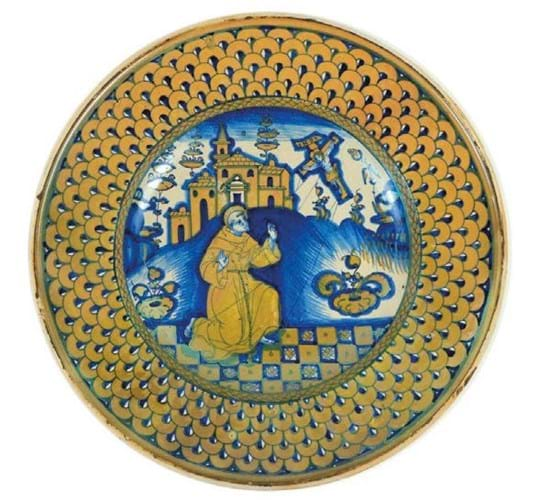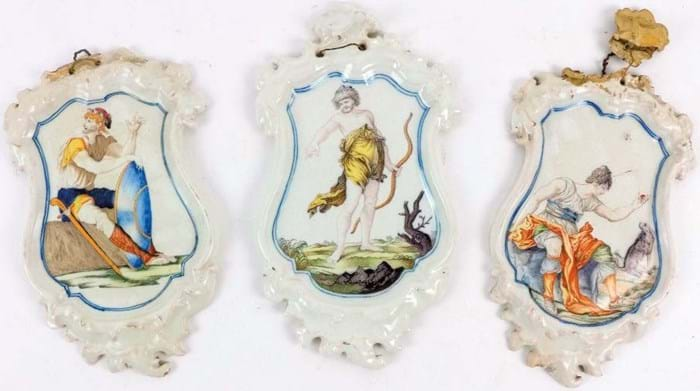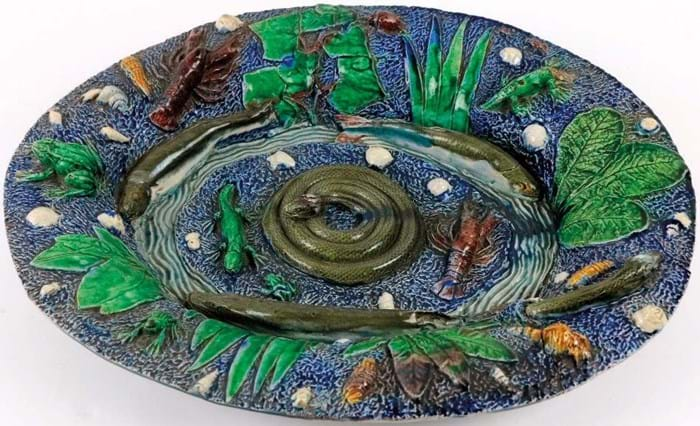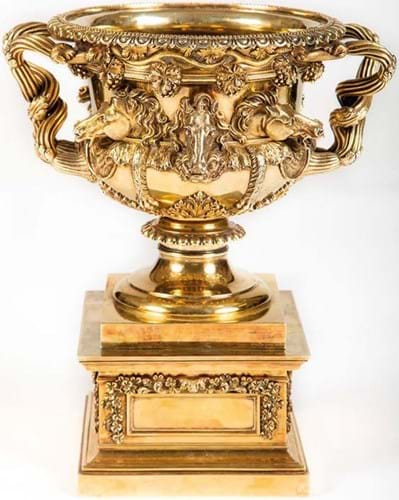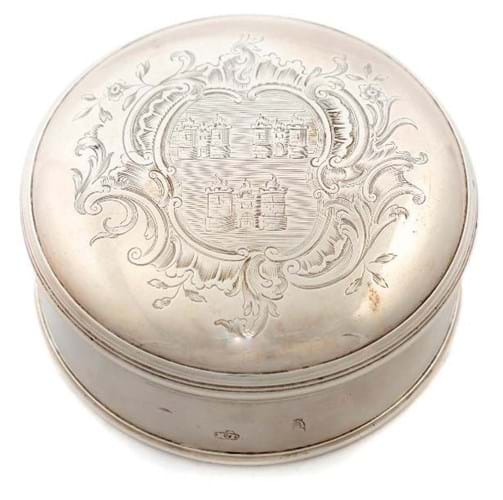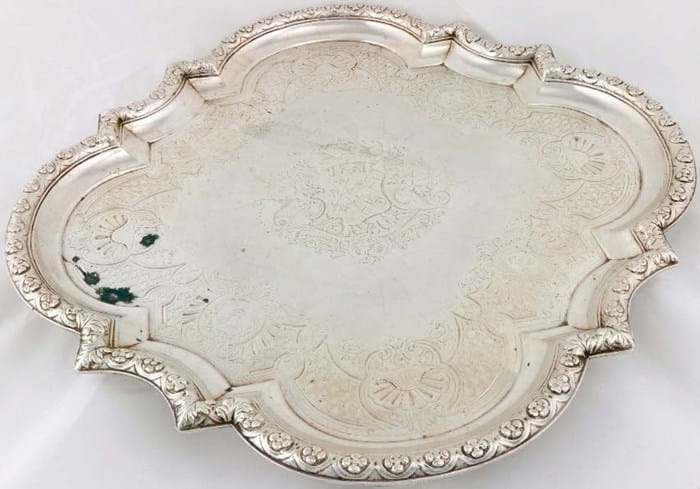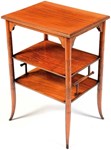Howth Castle in County Dublin had been the seat of the St Lawrence family and the Earls of Howth since the Norman invasion in 1180.
But in 2018, after a mere 842 years, Ireland’s oldest inhabited home was bought by an Irish investment group with plans to run the property as a commercial enterprise.
Christopher Gaisford-St Lawrence, now aged 92, will remain living in a wing of his historic grand pile as it becomes a luxury hotel and spa.
It is, of course, in such difficult circumstances that spectacular country house sales are made. So many properties went the same way in the 20th century; they are a much rarer beast in the 21st.
While the Gaisford-St Lawrence family had chosen to retain some important pieces, many of Howth’s best-known treasures were on the ‘for sale’ list alongside countless typical estate furnishings.
Swift on top
Kilkenny auction house Fonsie Mealy (25/20% buyer’s premium) won the consignment: some 900 lots offered from the Grand Hotel in Malahide on September 8-9 followed by the sale of the library from September 22-23 from the Marine Hotel in Sutton. Together they totalled almost €2.8m on the hammer.
As reported in ATG No 2510, the sale was topped at €234,000 (£200,000) by a portrait of Anglo-Irish satirist Jonathan Swift by Francis Bindon that had hung at Howth since it was painted in 1735.
Swift had been a regular guest at the house and had sat for his portrait at the earl’s expense. In view of the importance of this picture, it was essentially off-limits to international bidders as the Irish state was given three months to buy it at the hammer price. It has since been confirmed that the government was the buyer of this and all other lots that were subject to this ‘option to buy’ clause.
Call to arms
These included the Great Sword of Howth, a mighty 5ft 6in (1.68m) weapon that had been in the St Lawrence family for many generations.
According to tradition, it was used by Sir Armoricus Tristram, who arrived at Howth with Sir John de Courcy in 1177, to defeat the local Viking inhabitants in battle at Evora outside the gate of the present castle. The nearby tributary has since been known as the Bloody Stream.
A more sober assessment dates the two-handed sword to the late 15th century. It may well have been borne by Sir Armoricus’ descendant Sir Nicholas St Lawrence, 16th Lord and 3rd Baron Howth. He commanded the ‘billmen’ at the battle of Knockdoe in 1504, in which the army of the Lord Deputy, the Earl of Kildare, defeated that of Ulick Burke, Lord of Clanricarde.
The sword is first recorded in an inventory of 1748 and is described and illustrated in Joseph C Walker’s An Historical Essay on the Dress of the Ancient and Modern Irish to which is subjoined, a Memoir on the Armour and Weapons of the Irish (1788). A rare sword with provenance, it quadrupled the low estimate at €40,000 (£34,200).
A later blade from one of the earls of Howth was a presentation sabre awarded by the Tuam Yeomanry Cavalry, to the Earl of Howth as a small token of their esteem and approbation of his Lordship’s proper conduct during his command over them July 12th, 1803. Marked to the blade Jn Read, Maker, College Green, Dublin, it was worked with military trophies, an armorial crest, the Irish Crown Harp and an openwork monogram of George III.
The hammer price for this was €10,000 (£8550).
Furniture highlights

One of a pair of Palladian pier glasses by John Booker of Dublin – €106,000 (£90,600) at Fonsie Mealy.
Countless pieces of country house furniture came under the hammer (even the modern divans and sofas) but Howth was also the repository of some significant pieces of Irish Georgian furniture with primary provenance.
A pair of Irish George II carved giltwood and gesso architectural mirrors, each around 5ft 3in (1.65m high), appear to be those listed in the Great Dining Hall in an inventory at Howth Castle taken in 1746.
These grand Palladian pier glasses were almost certainly made by the celebrated and prolific Dublin firm of ‘Looking Glass Merchants’, ‘glass-grinders’ and ‘glass sellers’ established by the John Booker of Essex Bridge, Dublin. An almost identical pair, the design taken from William Jones’ The Gentlemen’s or Builders Companion published in 1739, were supplied by Booker to the 10th Viscount Gormanston in 1743.
Estimated at €50,000-70,000, they were hammered at €106,000 (£90,600).
Many of the top lots of furniture went to dealers, some bidding for private clients.
A pair of Irish carved giltwood and gesso side tables were almost certainly supplied to the 14th Lord Howth c.1738.
Discussed in Irish Furniture by James Peill and The Knight of Glin (2007), each has a rectangular top worked with a baron’s coronet, a frieze centred with a lion mask and leaf capped cabriole legs terminating in lion paw and ball feet. They had some damage and loss and had been regilded at some point but more than tripled the top estimate to bring €168,000 (£143,600), the sale’s second-highest price.
Equally admired was a mid-18th century mahogany decanter stand measuring 2ft 5in (74cm) wide. Carved with gadrooned borders and a frieze of leafs sprays and C-scrolls, it is raised on four leaf-carved cabriole legs terminating in lion-paw feet with small brass castors. Regarded by the Knight of Glin and Peill as one of the finest examples of early Irish Georgian mahogany occasional furniture, it took €48,000 (£41,000).
A pair of 18th century giltwood side chairs also came with history: they were those used by Queen Victoria and Prince Albert on their Howth Castle visit (September 2, 1853) and again by the future George V and Queen Mary (August 22, 1897). They are probably of London manufacture: the pair are similar to the chairs commissioned for Emily Countess of Kildare for Leinster House from Soho cabinetmaker John Trotter (1730-99).
Estimated at €3000-4000, they took €13,000 (£11,100) from a private buyer.
An early 18th century walnut armchair with barley twist supports and stretchers that, by repute, was used by Jonathan Swift sold at €3400 (£2900). It was identified as ‘Swift’s chair’ in Howth and its Owners penned by Francis Elrington Ball for the Royal Society of Antiquaries of Ireland in 1917.
Works of art
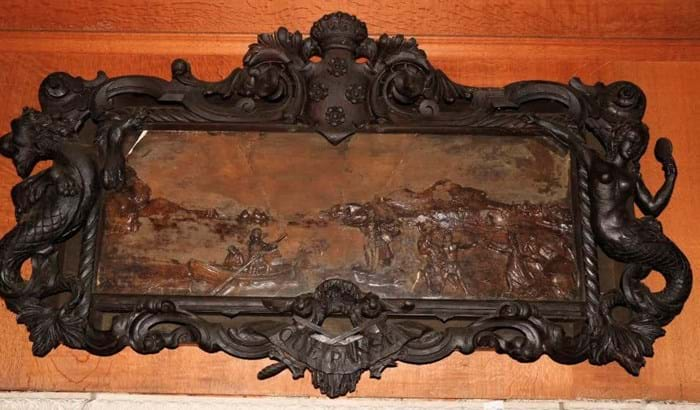
An 18th century bas relief depicting the pirate queen Grace O’Malley at Howth – €25,000 (£21,400) at Fonsie Mealy.
Another object intricately linked with St Lawrence family history was an 18th century carved wood relief set in an elaborate frame worked with a coat of arms.
This bas-relief sculpture, 2ft 10in high x 5ft 2in wide (87cm x 1.58m), provides a record of one of the best-known stories associated with Howth: the taking of the earl’s infant son and heir by pirate queen Grace O’Malley (Grainne Uaile) in 1575.
According to the legend, one almost certainly based on real events, O’Malley had moored at Howth when en route from London to County Mayo. Insulted to find the castle gates closed, she kidnapped the St Lawrence firstborn and returned the child only after receiving promises of future hospitality. The family have set a place for her at the dining table ever since.
Another of the lots deemed to be of ‘cultural and historic importance’ it was hammered down to a representative of the Irish state at €25,000 (£21,400).
No Irish country house would be complete without specimens of the Megaloceros Giganteus, the giant elk that roamed the island until the end of the Pleistocene. Found in the peat bogs, the skulls and enormous antlers made for impressive conversation pieces. The larger of two racks here, measuring 8ft 9in (2.62m) long, took €23,000 (£19,650).
In the great tradition of Irish country house sales, items from the principal property were supplemented by entries from other vendors.
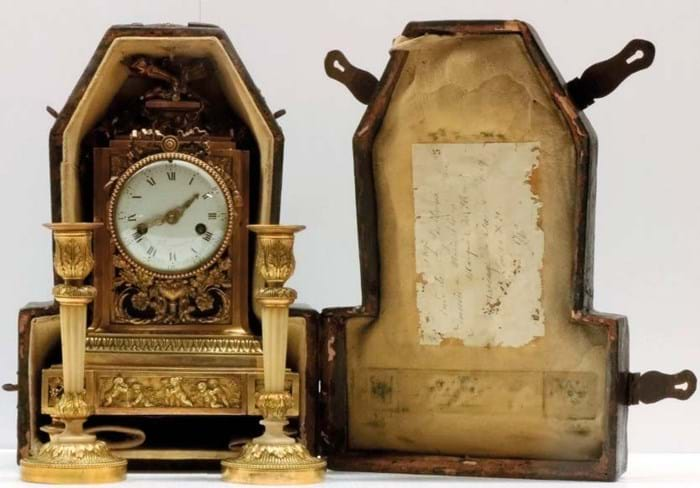
Louis XVI ormolu garniture in leather travelling case with Marie Antoinette provenance – €28,000 (£23,900) at Fonsie Mealy.
The September 8-9 sale included, as a welcome addition, this Louis XVI ormolu mantle clock by Regnault of Paris and matching candlesticks in an original leather covered travelling case.
As evidenced to various labels and a later plaque, this ‘Pendule et Flambeaux’ was originally a gift from Marie Antoinette to her lady-in-waiting Maria Therese de Barmont (1757-1849) on her 1778 marriage to Claude Charles de Pleurre (1737-1810). It came by descent until 1878 before it was acquired by the vendor’s family.
It was estimated at €4000-6000 but competed to €28,000 (£23,900).
Ceramics stars
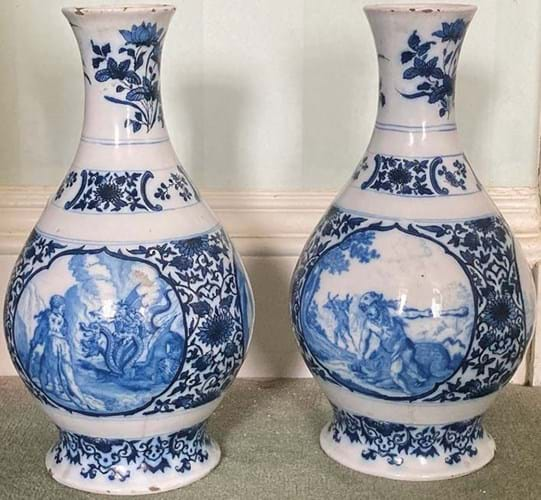
A pair of 17th century Delft vases by the Het Moriaenshooft factory – €38,000 (£32,500) at Fonsie Mealy.
The 17th and 18th century Chinese blue and white wares that decorated many of Howth’s more formal rooms performed with the usual aplomb – one of the first lots of the sale was a Kangxi mark and period jar and cover decorated with royal subjects and attendants sold for €14,000 (£12,000) – but it was the castle’s early European pottery that really stood out.
Foremost were a pair of 14in (36cm) Delft blue and white vases each decorated with beautifully painted roundels of hunting scenes and classical figures. Although not catalogued as such, these were marked IW for Jacob Wemmersz, the full owner of the Het Moriaenshooft (Moor’s Head) factory from c.1661-71. He was succeeded by his widow and later by his son Rochus Hoppesteyn until bankruptcy in 1690.
Pieces made by Het Moriaenshooft in the Gasthuislaan in Zuidkant area are some of the rarest and best of all Delftware production. Similar vases to this, with border decoration emulating Chinese porcelain and vignettes based on European prints, are in the Rijksmuseum and the Museum Boijmans Van Beuningen.
In good condition, save some minor rim chips, they were guided at €700-1000 but made a more impressive €38,000 (£32,500).
Two 16th century Italian maiolica dishes each measuring 16in (41cm) across carried estimates of €5000-7000 apiece.
Probably made in Deruta, c.1540, these were both worked in lustre with borders of arches and leaf sprays, one centred by the angel of the Annunciation, the other by St Francis of Assisi receiving the stigmata, They were in good condition and sold at €10,500 (£9000) and €10,000 (£8550) respectively.
A group of three 11in (27cm) high Spanish faience wall plaques, each with the cartouche shaped panels enamelled with classical vignettes, went well over hopes of €600-800 at €6200 (£5300).
They were probably by the Alcora factory, founded in 1727 near Valencia by the wonderfully-named Buenaventura Ximénez de Urrea, Abarca de Boléa, ninth Count of Aranda. He hired artisans from the renowned Moustiers factories in southern France to sate a demand for French-style ceramics in Spain. These plaques (two of them broken) date from c.1755 when the factory embraced the rococo under the count’s son Pedro Pablo.
Estimated at €250-350 was a large ‘rustic ware’ oval dish worked with fish, shell fish and reptiles and seaweed in relief in the manner of French potter Bernard Palissy (1510- 90). Precise dating or attribution of these pieces is difficult with many pieces now ‘downgraded’ as the work of late 16th or 17th century ‘followers’ (and some considered 19th century imitations). However, this 18½in (47cm) example, with a section broken and restuck, sailed past its nominal guide to bring €8600 (£7350).
Stellar silver
The silver at Howth combined some textbook ‘set pieces’ of Regency and Georgian plate of the type one might have encountered in any great house a century ago, plus items of more regional significance.
Among the former were two large silver gilt casts of the Warwick vase: one by Philip Rundell (London 1820), the other by Richard Sawyer Junior (Dublin 1836). Both raised on plinths of scrolling shamrocks by Sawyer, they weighed 212 and 225oz respectively. The Irish William IV example is undoubtedly rarer but there was relatively little to choose between them in terms of price. It took €23,000 (£19,650) with the George IV example by Rundell sold at €24,000 (£20,500).
Two Dublin-made circular freedom boxes, both dated c.1765, carried Howth family inscriptions. The example by Richard Tudor was engraved with the arms of the City of Dublin and the arms of the St Lawrence Family with the motto Que Pance.
Another of the same form by Benjamin Stocks was similarly engraved with an armorial and inscribed to the base The Corporation of Shoemakers of the City of Dublin, Present the Freedom of their Guild to the Rt. Hon. Lord Howth in Testimony of his constant endeavours to Promote the Interest of Ireland 1767.
Guided at €3000-4000 each, they sold at €12,000 (£10,250) and €12,500 (£10,700) respectively. Both were purchased by the Irish state and will eventually be on display.
A 16½in (41cm) square serpentine form salver from the George II period by John Hamilton (Dublin 1726) was engraved with the crest of the Gorge family. At 100oz it was possibly part of the dowry brought by Lucy Gorges when she became the Baroness Howth in 1728. A rare form, it took €21,000 (£17,950).
Still to come…
Books from the Howth library, including a €74,000 (£63,250) copy of Ippolito Rosellini’s Monumenti dell Egitto e Della Nubia in elephant folio, will be reported in a future issue.


